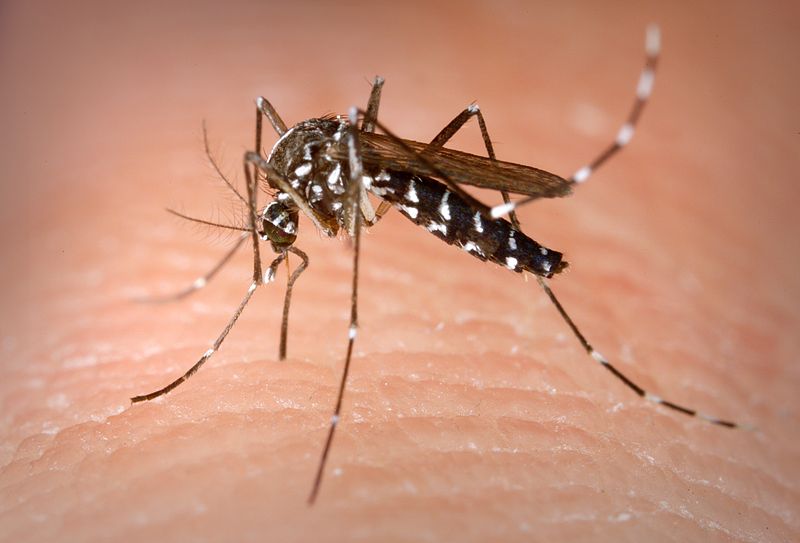
“Every joint in my body hurt,” he said.
He still feels “kind of punky,” but he said the fever seems to be gone.
Metzger didn’t report his case to the V.I. Department of Health, but the rising number of reported cases prompted Health to send out an alert Friday via the V.I. Territorial Emergency Management Agency’s emergency notification system — V.I. Alert.
There are now 25 confirmed cases in the St. Thomas-St. John district, according to the alert.
As of Aug. 23, St. Thomas had 23 confirmed or probable cases and 285 suspected cases, according to Health’s website. On St. John, two people were in the confirmed/probably category with three others are suspected to have chikungunya. St. Croix had no confirmed or probable cases, according to the Department of Health, but 23 people are suspected of having the illness.
“We know our numbers are just the tip of the iceberg,” said Dr. Esther Ellis, Health’s territorial epidemiologist.
An Aug. 8 report indicated 16 confirmed cases, two probable and 158 suspected throughout the territory.
There have been no fatalities, according to Ellis.
She said reporting is essential so the department can track when the illness reaches its peak and when it’s on the wane.
People who believe they’ve had chikungunya can self-report by calling Health, Ellis said. If they want to confirm but don’t want to pay for a doctor’s visit, they can go to a blood lab. She said the lowest price is $15 for the blood draw and the chikungunya test free.
Chikungunya first appeared in the Virgin Islands in the middle of May, with Health recording two cases. It first showed up in the Caribbean in December 2013 on French St. Martin.
“It’s spreading around the islands,” Ellis said.
The symptoms of chikungunya are similar to dengue. Chikungunya, however, has only one strain, Ellis said, while dengue has four strains that can infect a person.
“And once you get it you’re immune for life,” Ellis said.
She said those under age 5 and over 70 are most most likely to have a severe reaction if they get chikungunya.
Ellis said about 75 percent of people who are exposed to chikungunya get sick. In the case of dengue, she said only about 25 percent of people exposed experience symptoms.
The symptoms for chikungunya usually begin three to seven days after being bitten by an infected mosquito and may include fever, severe joint pains, often in the hands and feet, headache, muscle pain, joint swelling or rash. The symptoms can be severe and disabling. Most patients report improvement within a week.
Chikungunya is transmitted by the Aedes species of mosquito.
“It has black and white striped legs,” Ellis said.
She said the Aedes mosquito lives mostly in and around houses and bites during the day.
The Health Department is advising anyone experiencing symptoms of chikungunya or dengue to see a physician and avoid mosquito bites to prevent the spread of the disease.
Until diagnosis is confirmed by a medical provider, residents are urged to take pain medications, like Tylenol, that will not cause bleeding complications. Pain medications characterized as NSAIDs, such as Aleve and Aspirin, should be avoided.
The Health Department urged resident to help prevent the spread of chikungunya by using insect repellents containing DEET or oil of lemon eucalyptus.
“DEET is most effective,” Ellis said.
Health also recommend to get rid of standing water sources. Ellis said check saucers under plants to make sure they’re not breeding mosquitos.
When weather permits, wear clothing that protects from mosquito bites such as long-sleeved shirts and long pants. Treat clothing with permethrin or purchase permethrin-treated clothing. Ellis said permethrin is available through mail order from places like Amazon and REI.
It’s also recommended to protect infants by covering cribs, strollers and baby carriers with cotton mosquito netting at all times, day and night, both inside and outside. Dress babies in loose cotton clothing that covers arms and leg.
The World Health Organization website indicates that chikungunya was first observed during a 1952 outbreak in southern Tanzania. By 2004, it reached epidemic status.
To learn more about chikungunya and ways to prevent the spread of the virus, visit www.healthvi.org or the Centers for Disease Control and Prevention’s website www.cdc.gov/chikungunya. Call the Health Department’s Division of Public Health Preparedness at 773-1311 ext. 3280 or 642-3111. Reach Health’s Bureau of Epidemiology at 773-1311 ext. 3241 or 626-1654.





